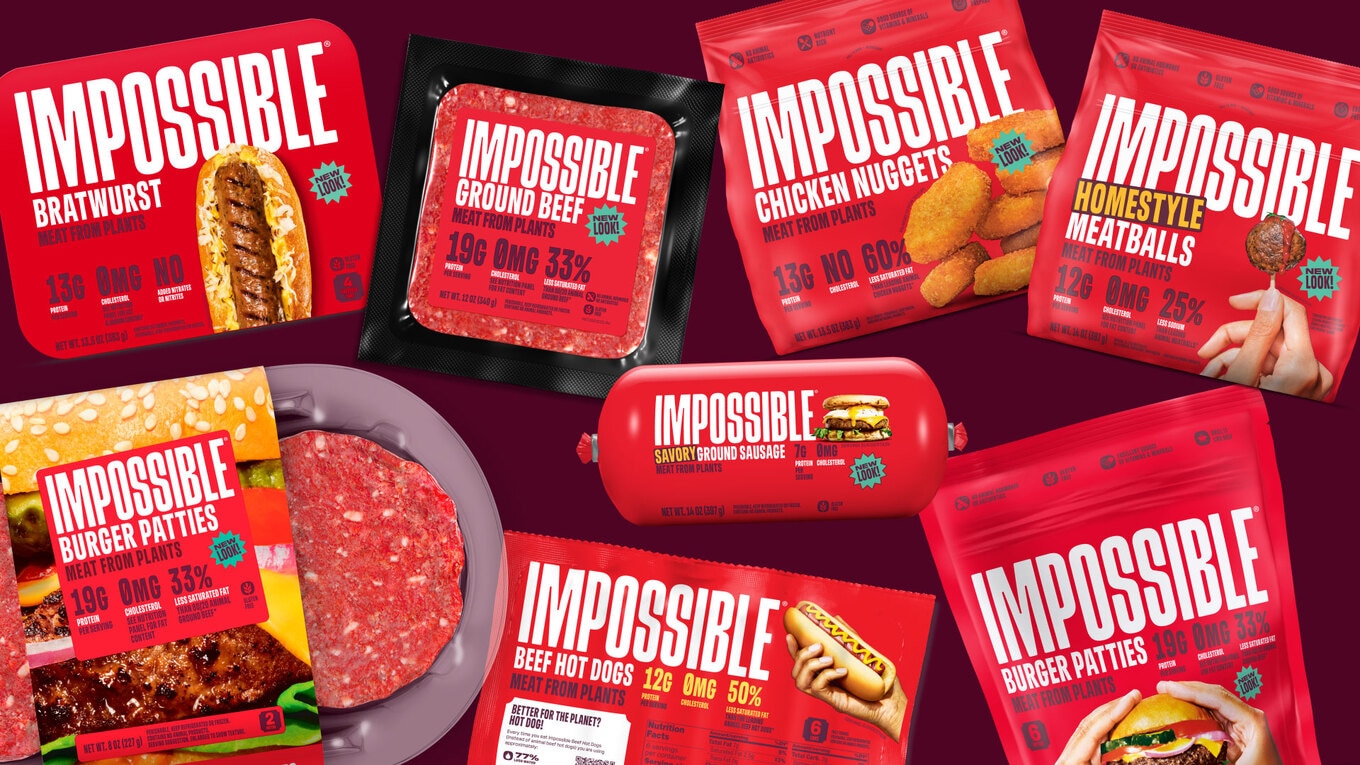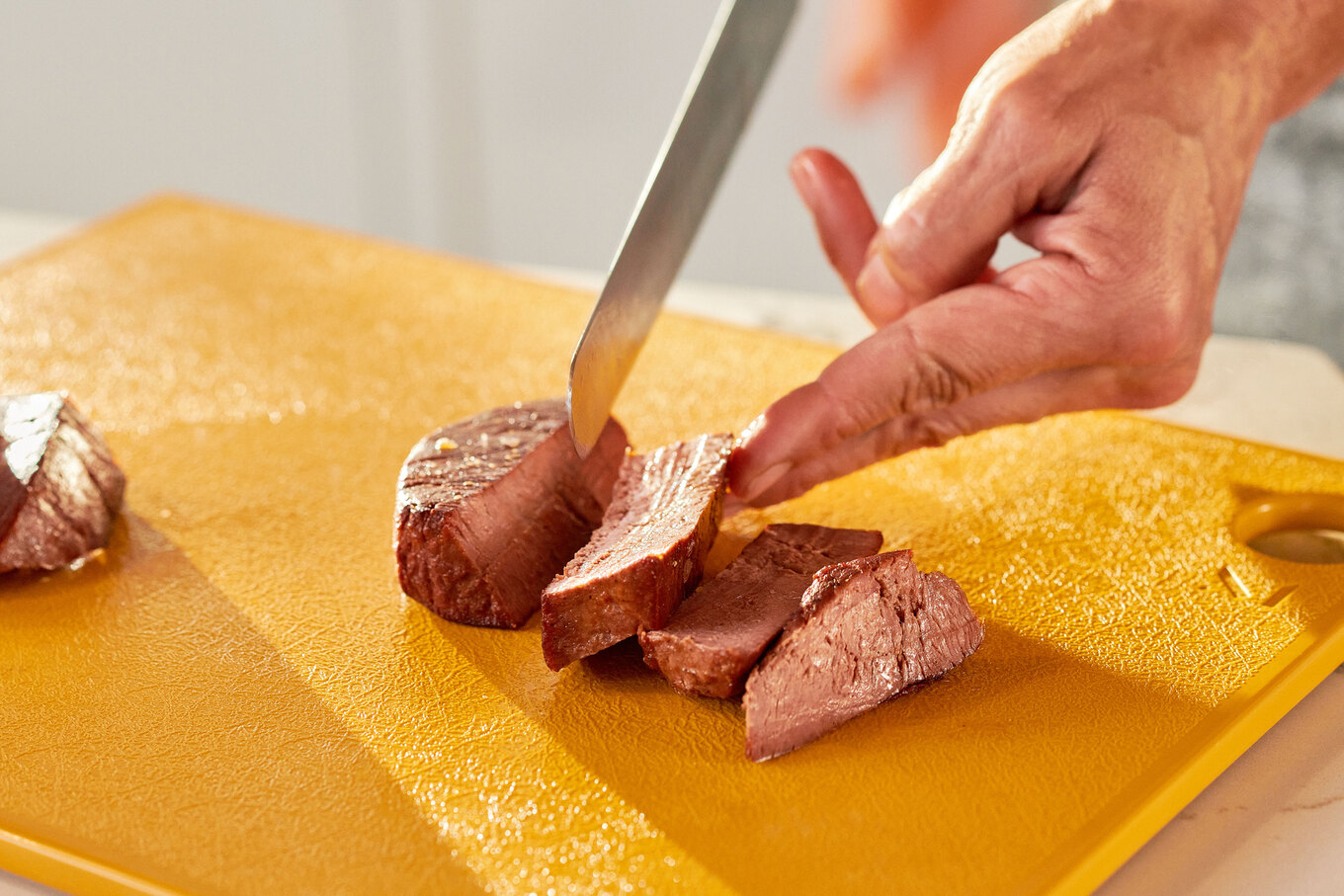From environmental degradation to increased disease risks, there are varied reasons for cutting down on eating meat. However, making the leap can be daunting, but in this day and age, not consuming meat doesn’t mean you will be strapped for choice when it comes to protein thanks to plant-based protein-rich sources such as tofu, tempeh, beans, nuts, and plants in general.
Yet the fear of feeling hungry without meat is real, but maybe, eating more meat can be the answer.
 Impossible Foods
Impossible Foods
Sure, that might sound contradictory but the only thing that needs to change is the assumption that meat must come from animals.
That’s the idea behind the approach some plant-based companies are taking to move the needle on reducing meat consumption. They’re redefining “meat” not by removing it from our plates but by transforming its source—from animals to plants.
Eat more meat to eat less meat
Plant-based company Impossible Foods has always contended that meat does not need to come from animals. In fact, its founding mission is to use plants to recreate every animal product, so that humans can continue to eat delicious meats without the downsides.
This month, the company doubled down on that mission with its “Eat More Meat” campaign, aiming to further redefine what meat can be. The campaign is a dynamic mix of traditional and innovative marketing techniques designed to appeal directly to meat lovers who might not yet be convinced about plant-based meat options.
 Impossible Foods
Impossible Foods
The centerpiece of this campaign is the notion that one can still enjoy all the meat they desire, just made from plants—a concept that seeks to maintain the deliciousness of meat without the associated guilt or environmental cost.
“We see this campaign as a way to let meat eaters know Impossible meat is the best way to keep eating meat you love, just without a lot of the problems associated with animal meat,” Leslie Sims, Chief Marketing & Creative Officer of Impossible Foods, said in a statement.
“Whether you’re a vegan, hardcore meat eater, or somewhere in between, we have you covered,” Sims said.
This campaign cleverly utilizes familiar imagery and scenarios, such as barbecues and family dinners, presenting Impossible’s plant-based meats in settings where traditional meat would normally be the star. By doing this, Impossible Foods is not just selling a product; it is selling an experience that remains deeply rooted in American culture but refreshed for modern consumers.
The vibrant commercials, peppered with scenes of sizzling burgers and sumptuous hot dogs, underscore the message that Impossible Foods’ products are made for everyone. They are crafted to appeal not just to those who follow plant-based diets but to anyone who enjoys meat.
 Impossible Foods
Impossible Foods
This campaign builds on several steps Impossible Foods has taken this year to reposition itself in the food industry. The company recently dropped its green and blue branding in favor of red, a hue that is more closely associated with meat in food branding. The color is used by major brands—such as McDonald’s and Wendy’s—as a tool to capture consumer attention.
Earlier this year, Impossible also moved further into meat territory when it announced the Impossible Ranch. This initiative represents a profound shift in agricultural practices by transforming a traditional cattle ranch into a plant-based crop cultivation site.
Located on 70 acres in South Carolina, the ranch now focuses on growing soybeans, sunflowers, and coconuts—key ingredients in Impossible’s product line. This bold move showcases how the same land can be used to grow meat, except Impossible’s method does not need to rely on cows—who the company is caring for in a sanctuary setting instead.
More Meati meat
Another company, Colorado’s Meati Foods, is also out to show that meat does not need to come from animals—or plants, for that matter.
 Meati Foods
Meati Foods
Instead, Meati makes its meat from mycelium (which it calls “MushroomRoot”, the fast-growing root system of mushrooms, which produces the chewy texture and umami flavor of chicken and beef.
Meati also wants consumers to eat more meat—of the mycelium variety—and is moving full steam ahead on making its own ranch fully operational. Called the “Mega Ranch,” Meati’s production facility in Thornton, CO can produce 45 million pounds of mushroom meat annually.
To put this in perspective, just one tablespoon of fungi spores is capable of producing the whole-food protein equivalent of hundreds of cows in a matter of several days.
This month, Meati secured an impressive $100 million in funding to help it make more MushroomRoot steaks, whole chicken breasts, nuggets, and jerky—and expand their retail reach—in order to better compete with animal meat.

“Meati is on a mission to make MushroomRoot the undisputed leader of the center of the plate,” Phil Graves, the new CEO of Meati, said in a statement.
“The backing of our investors, the belief by retailers nationwide, the love from our customers and the commitment from our employees leave no doubt in my mind that we’re on the right path to get there,” Graves said.
And Meati isn’t stopping at just the Mega Ranch. The company also plans to open a “Giga Ranch,” aiming to produce hundreds of millions of pounds of mycelium-based meats annually, so that you can continue to eat as much meat as you want without harming a single animal.
For more plant-based stories like this, read:
JUMP TO ... Latest News | Recipes | Guides | Health | Subscribe









